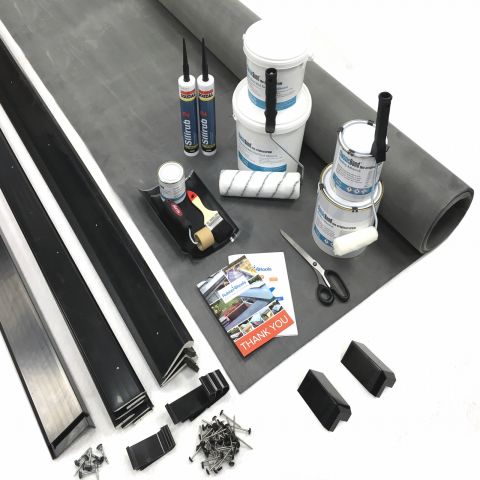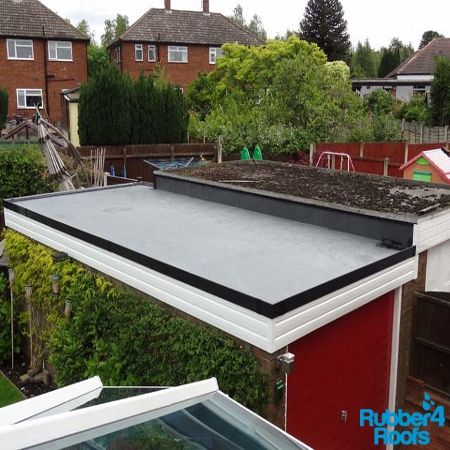ClassicBond® 1.2mm EPDM Rubber Roof Membrane
ClassicBond® One Piece EPDM Rubber Roof Membrane
ClassicBond® EPDM Is the original EPDM roofing system with a proven track record of over 50 years service life. Recognised as one of the most reliable, durable and sustainable materials for your flat roof. ClassicBond is manufactured by Carlisle-Syntec who pioneered EPDM roofing systems in the 1960’s
BBA Certified & preferred by roofing professionals, ClassicBond is tangibly more pliable, slate grey in colour and is the ideal EPDM rubber roof covering for both large and small flat roofs.
Specification
The rubber roof EPDM membrane is sold by the running metre from large pre-joined sheets starting at 0.5m in width and increasing in 0.5m increments up to 30.5 metres in length, by 15.25 metres in width. This means no on-site joining is required as long as the roof does not exceed these measurements and makes the ClassicBond EPDM the best for quick and easy installation.
ClassicBond EPDM is available in two thicknesses:
-
1.2mm (standard)
-
1.52mm (commercial)
Why Choose ClassicBond®?
The ClassicBond roof system is designed to be cost effective and much faster than traditional roofing systems. For most applications the membrane is cut to the size of your roof and supplied as one single piece, trimmed to size and finished off with the correct drip, kerb edge and wall up-stand trims.
ClassicBond is available in two thickness’s 1.2mm (Standard) and 1.52mm (Commercial)
As EPDM is not affected by extremes of temperature the membrane will not crack, peel or split.
The rubber roof membrane is sold by the running metre cut from large sheets measuring: 0.5m, 1m, 1.5m, 2m, 2.5m, 3.0m etc right up to 15.25m in width by 30.5 metres in length. So that’s no joins required if the roof is no bigger than 15.25 metres x 30.5 metres.
You might also need
If you’re buying for a new roof or replacing an old one, you will need to consider the following components in your roof kit...
- Adhesives
- Tapes
- Drains
- Edge Trims
- Tools
SKU |
CB-12 |
|---|---|
Stock Type |
Warehouse Fulfilled |
Thickness |
1.20 mm |
Max Length |
30.5 m |
Brand Name |
ClassicBond |
-
 Flat Rubber Roof Kits£359.77 £299.81
Flat Rubber Roof Kits£359.77 £299.81 -
 ClassicBond® 1.5mm EPDM Rubber Roof Membrane£16.20 £13.50
ClassicBond® 1.5mm EPDM Rubber Roof Membrane£16.20 £13.50 -
 ClassicBond Pro Fleece Reinforced EPDM - 18.58m2£570.00 £475.00
ClassicBond Pro Fleece Reinforced EPDM - 18.58m2£570.00 £475.00



















